The Temple of أبو سمبل, an extraordinary archaeological marvel of ancient Egypt, was commissioned by Pharaoh Ramesses II in the 13th century BCE during the New Kingdom period. Situated in Nubia near the present-day border of Sudan, it was built to demonstrate Ramesses II’s power, solidify his presence in the region, and honour prominent Egyptian deities such as Amun, Ra-Horakhty, and Ptah, as well as the pharaoh himself. The grandiose complex comprises two rock-cut temples: the Great Temple dedicated to Ramesses II and the smaller temple dedicated to his queen, Nefertari, which is notably one of the few Egyptian temples honouring a queen as an equal to the pharaoh. The temple walls vividly depict Ramesses’ military victories, including the famous Battle of Kadesh, marking the site as as much a monument of power as it was one of religious devotion.
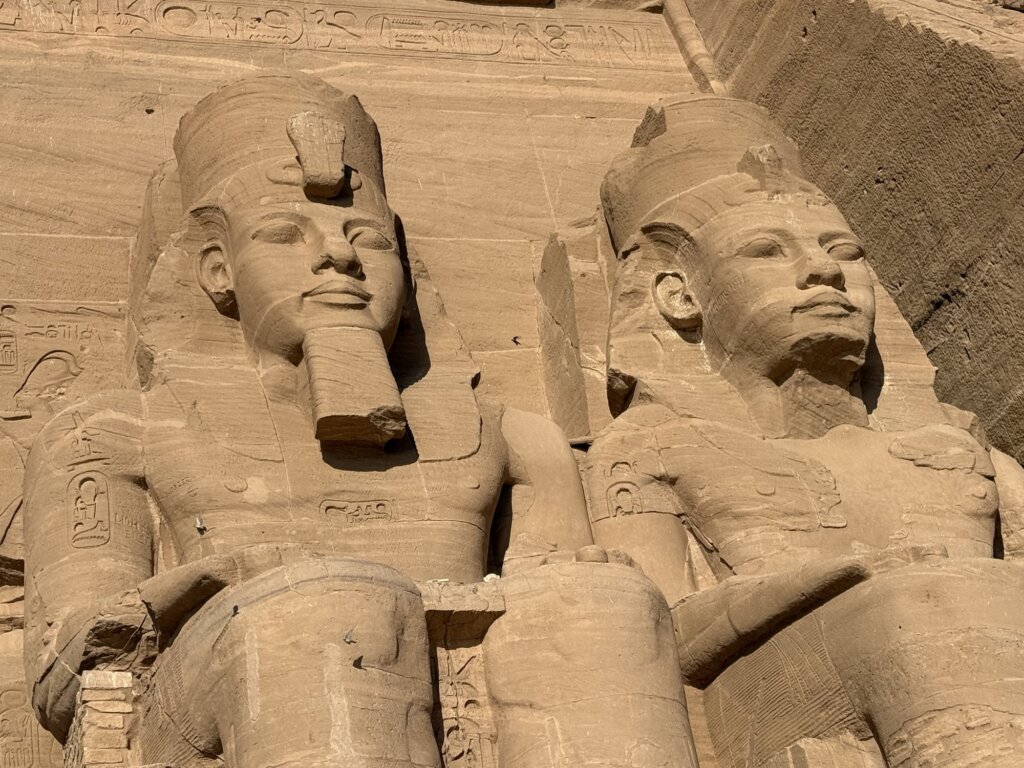

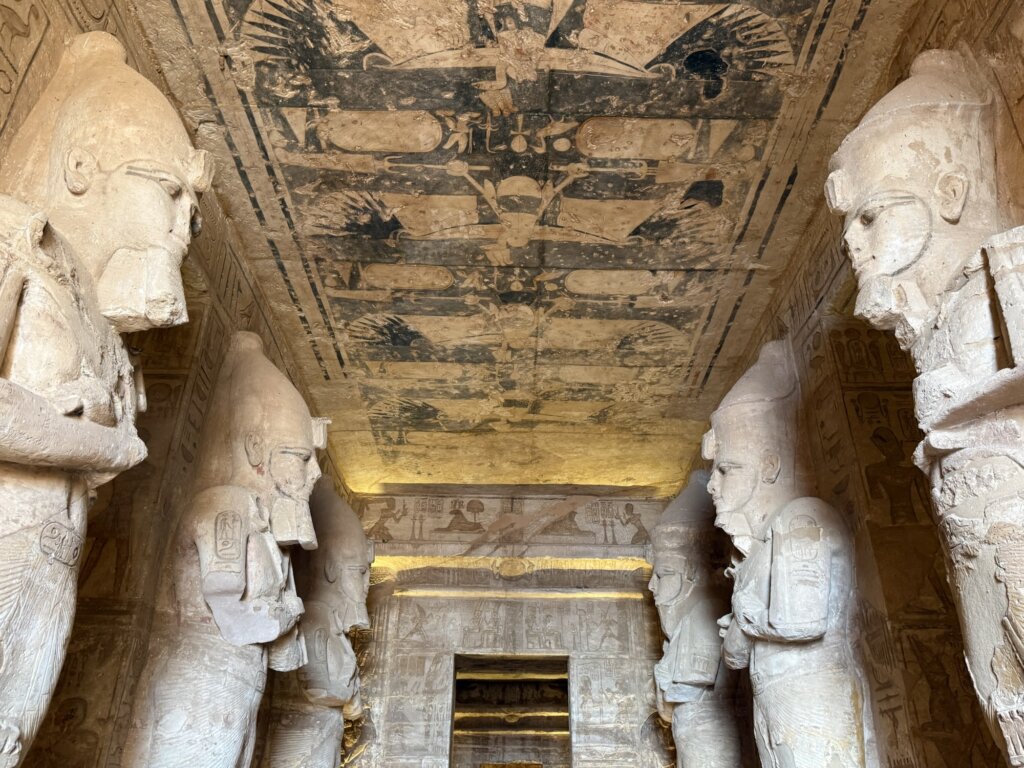
أبو سمبل is renowned for its monumental statues and architectural features that make it a unique ancient site. The Great Temple’s facade is dominated by four colossal statues of Ramesses II, each standing around 20 metres tall, which impressively greet visitors. Inside, the temple’s interior is richly decorated with reliefs and hieroglyphic inscriptions that highlight both the divine status and military prowess of the pharaoh. A remarkable aspect of the temple’s design is its precise solar alignment: twice a year, on approximately 21 February and 21 October, sunlight penetrates the sanctuary, illuminating the statues of the gods and Ramesses within. This astronomical phenomenon reflects the Egyptians’ sophisticated understanding of solar patterns and their integration into religious architecture, enhancing the temple’s mystical significance.
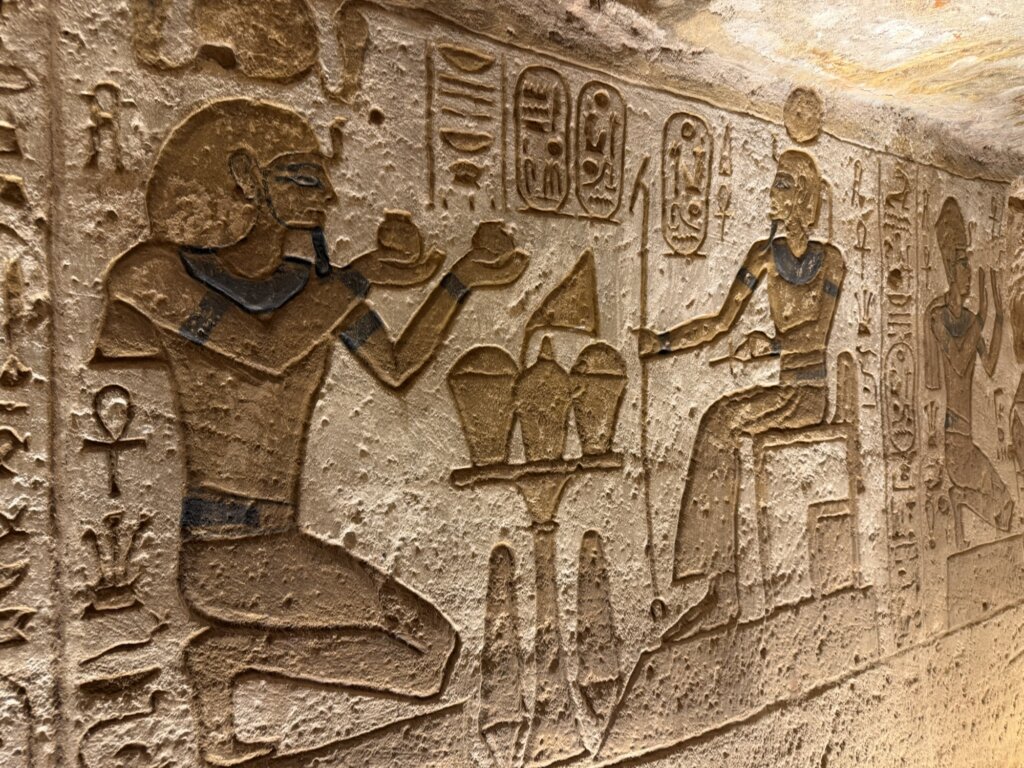


Visitors today can explore both the Great Temple and the smaller temple dedicated to Queen Nefertari, experiencing the grandeur of ancient Egyptian craftsmanship firsthand. The interiors offer a glimpse into ancient artistic techniques, with beautifully preserved carvings and hieroglyphics that recount stories from Ramesses’ reign and celebrate the queen’s status. The surrounding setting near Lake Nasser, with the statues set against a cliff face, provides an imposing and atmospheric backdrop. There are also visitor facilities nearby, including a centre with exhibits about the temples’ history and the astonishing relocation project that saved them.

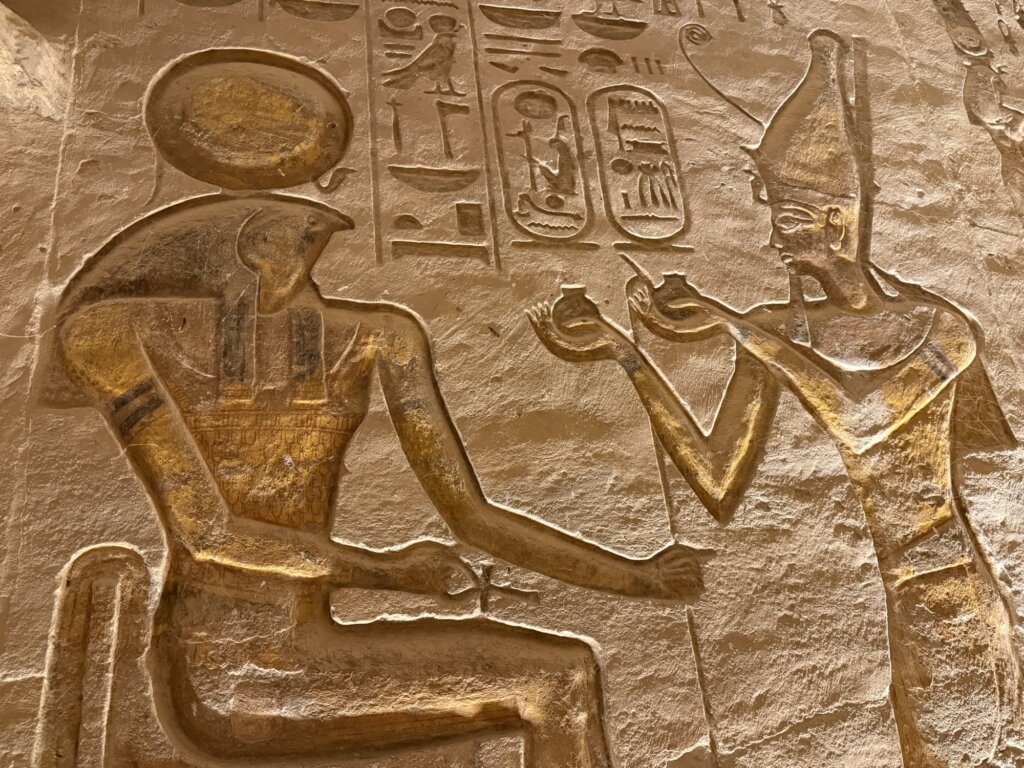

The relocation of Abu Simbel in the 1960s stands as one of the most remarkable feats of heritage preservation and engineering in modern times. The construction of the Aswan High Dam threatened to submerge the temples beneath the new reservoir created by Lake Nasser. To protect this invaluable site, an international UNESCO-led project carefully cut the temples into over a thousand large blocks, each weighing several tons, and reconstructed them on a higher plateau some 64 metres above their original location and approximately 180 metres inland. This painstaking process, which lasted from 1964 to 1968, preserved not only the physical structures but also the original solar alignment, allowing the twice-yearly solar illumination to continue, albeit with a minor adjustment of one day. The success of the relocation project symbolizes an extraordinary balance between safeguarding ancestral heritage and accommodating modern development.
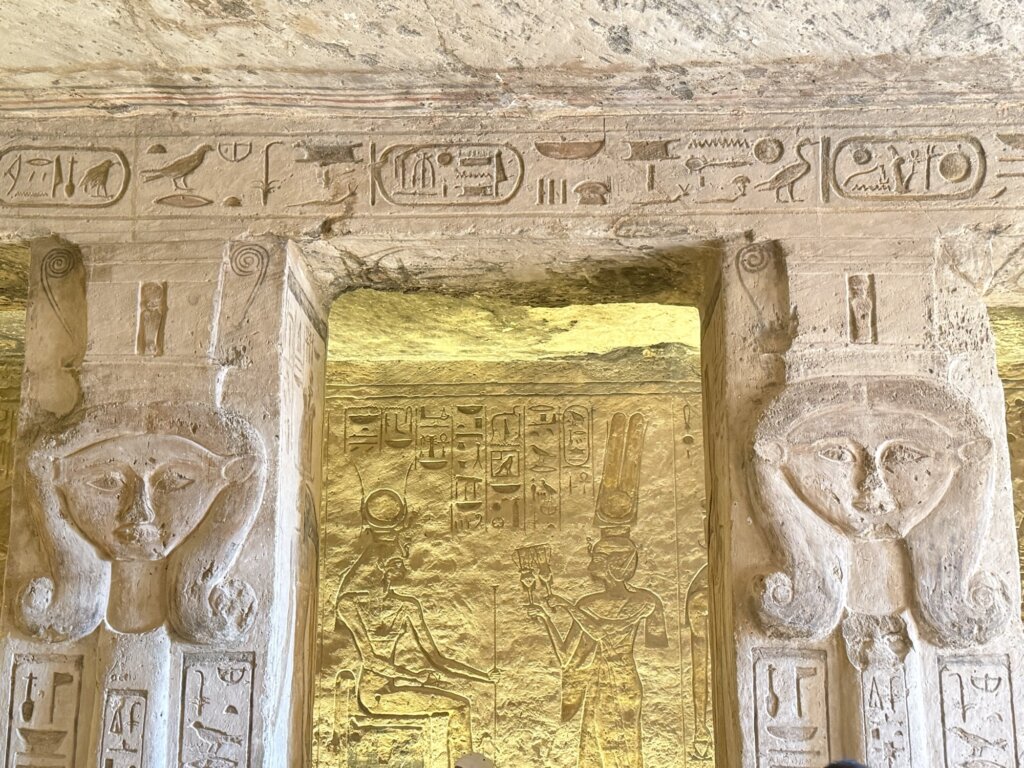
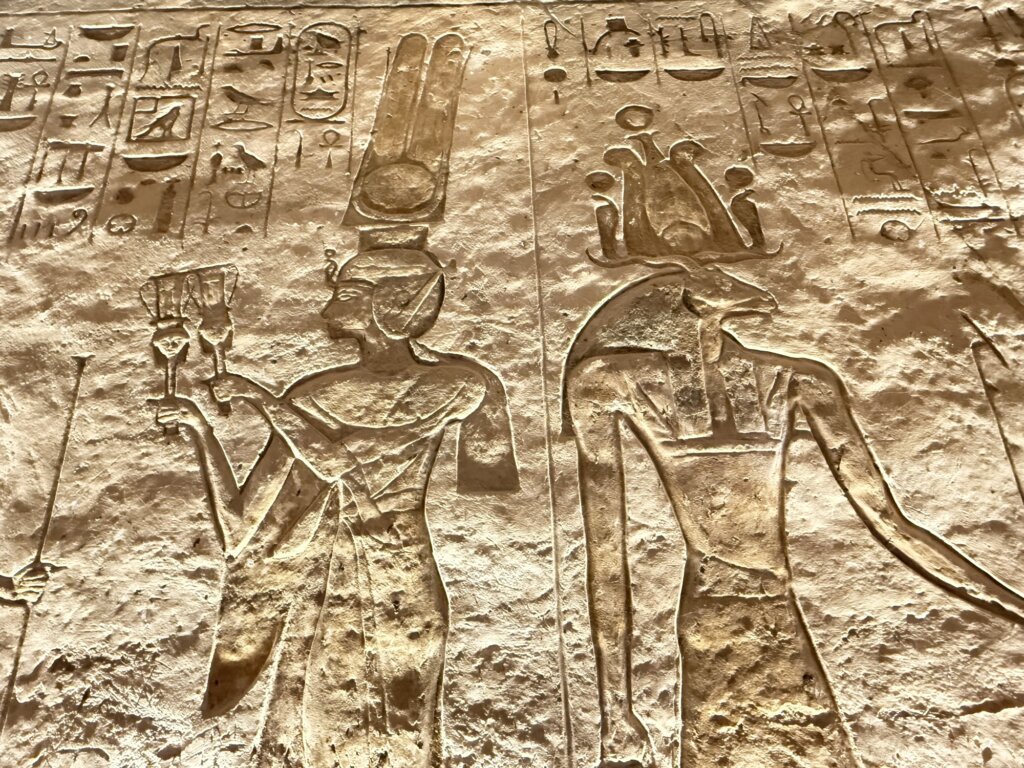

Ramses the Great
Ramses II, often called Ramses the Great, stands as one of the most remarkable figures of ancient Egypt’s long history. Born in the 13th century BCE into the Nineteenth Dynasty, he ascended to the throne at a young age and ruled for over six decades, a reign marked by strength, ambition, and enduring architectural marvels. His era represented the height of Egypt’s imperial power, characterised by stability at home and grandeur abroad. Throughout his reign, Ramses maintained Egypt’s dominance across the Near East and consolidated the prosperity of the empire, leaving behind a legacy that would awe generations for millennia.
One of Ramses’s greatest achievements was the signing of what is considered the world’s first known peace treaty with the Hittites. After years of fierce conflict, most notably the Battle of Kadesh, both powers agreed to mutual recognition and alliance – a remarkable act of diplomacy for the time. Domestically, his achievements were equally impressive. He undertook colossal building programmes, commissioning temples, statues, and cities that glorified both the gods and his own divinity. Among these, the vast temple complex at Abu Simbel in southern Egypt, carved directly into the mountainside, remains a masterpiece of ancient engineering and a testament to his ambition.
Ramses II also transformed the Egyptian capital, Pi-Ramesses, into a city of splendour and power. This new seat of government projected the might of Egypt across its borders, filled with lavish palaces, temples, and workshops for artisans. His reign brought not only monumental construction but also a flourishing of art and culture that reflected his image as a god-king. The enormous statues depicting his likeness, serene yet commanding, were more than royal portraits—they were symbols of an eternal order, a fusion of divine and human authority meant to preserve his memory for eternity.
Amid all his triumphs, Ramses II’s deep affection for his Great Royal Wife, Queen Nefertari, reveals a more personal side of his long and often larger-than-life reign. Nefertari’s beauty, intellect, and status are immortalised in the exquisite temple he built for her beside his own at Abu Simbel. The walls of her temple celebrate her as a goddess in her own right, with inscriptions expressing profound devotion and admiration. Long after her death, Nefertari’s memory endured through her magnificent tomb in the Valley of the Queens – one of the most finely decorated in Egypt – symbolising a love story that, unlike many royal unions arranged for power, seemed rooted in genuine affection and respect.
Temple of Abu Simbel
أبو سمبل
Egypt
Loading map...


